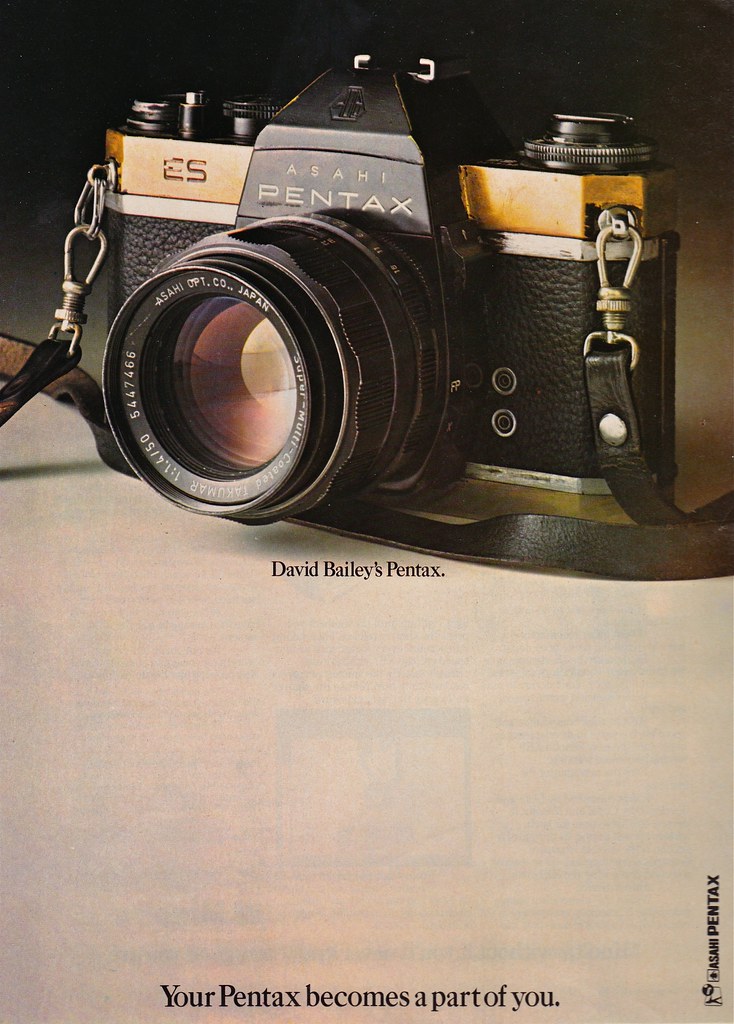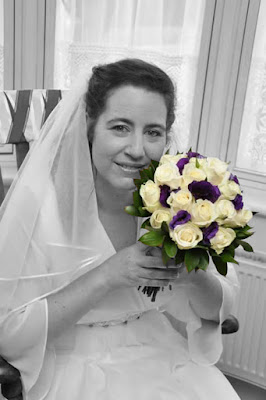The following blog post is about the life and career of David Bailey in terms of how his work has been credited to the world of photography. I am aiming for this blog post to meet the Merit/ Distinction criteria,
David Bailey Backstory
David Bailey was born in Leytonstone, in East London. He was born on 2nd January 1938. He was brought up in East Ham. He attended school but faced many problems academically because of his undiagnosed dyslexia and Dyspraxia, however from a young age he took a serious interest in photography which he developed from his love of natural history such as insects and nature. He attended a scholl that taught him "less than more basic council school".
He dropped out of school at 15 and worked as a copy boy on Fleet Street for the famous Yokshire Post. |In 1956 at the age of 18, he joined the RAF and completed his service in Singapore for a year. following this he decided to pursue photography and bought a Rolliflex Camera. in 1958, he was determined to pursue photography and even bought a Canon Rangefinder Camera, He applied to the London College of printing but was turned down because of his bad school record. He then secured a job with David Ollis who was the main supplier of photo's for Queen Magazine. 1959, he became an assistant to John French in London, At the age of 22, he was already working as a freelance photographer for British Vogue.
This is when he created his most famous work and photographed all the celebrities that took the sixties by storm such as : The Beatles, Twiggy, Jean Shrimpton, The Rolling Stones, Micheal Caine, Peter Sellers and many others. He also took the oppotunity to take photo's of the current fashion trends of that decade in both New York and London.
Since then he has directed many adverts and commercials, Taken part in many phtographic Exhibit which still promotes his work that he has done through the ages. He continues to take many photo's now of celebrities and is still considerd to be one of the most famous fashion photographers in the wxhb c orld. even though he is 78 and still working.
 |
| Brick Lane, London, 1961 |
Examples of His work:
To the left and below, this an early example of David baileys work, this a picture taken in East End of London. These are the photo's that bailey first took with his Rolliflex Camera. His main aim was to show the real life of how people lived in he east end that type. The Picture of Brick Lane is extremely interesting because it shows the bad sign of London that nobody imgined or heard of. The Women is standing to his back to the camera as if to shield herself from life hat was really like,
The Picture below is hwat i believe to be a bad example of his work, This only what i consider in my opinio a the picture doesn't reallly ehibit what life was really like at that point. In my opinion the photo looks stage and although it is trying to get a message across between the rich and the poor, I find it confusing to understand as the picture is abckwards. It also shows him taking the photo which ruins the photo in a way and takes the real message away from the picture.
 |
| One of Bailey's Earlist Pictures |
Techniques
David Bailey has claimed never to use "zoom" in his like, despite the majority of pictures being of people's face and shoulders. David Bailey takes more than just a picture. He takes the photo of the personality that the person has and does not make them pose but rather have the photo taken when people are in their natural state. he claims his main technique is to meet the person, actually get to know them over the course of roughly an hour and a half. over a coffee or a meal. After this he only spends 5 minutes taking the actual photos. because that's what he wants to see and that''s the side that they should be shoeing the world.
 |
| Iconic Picture of Audrey Hepburn with her Iconic Makeup. David Bailey claims to have never uses zoom in his life. |
Equipment
David Baileys Attitude towards equipment is quite interesting he says, that you don't need a camera to take a good picture. The Camera is only a object which takes and process the image. The real magic is in the photographer himself. anyone can use a camera. Anyone can be a photographer. David Bailey Even said "I knew how to take a picture before i knew what a camera was".
 |
| David Bailey's Pentax, he took lot's of iconic photo's with it. |
Locations:
David Bailey has a Photography studio in central London in Bloomsbury. This is where all the potrait have been taken and have been since the 1960's. He does take photography out of the studio though, he likes to visit east end .
 |
| Haitian Fashion |
London and take photography there as it is where he grew up and it's engaging to see how the same area has changed through the decades. In the 1970's on a mjaor assignment for Vogue he photographed fashion across against the foundations of the mountains that were in inner Turkey. He continued to travel the world taking photo of the different fashion trends of that decade and compare to different countries. such as: India, Peru, Japan, Haiti, Brazil , Papaua New Guinea, East Africa, Australia, Delhi and the Naga Hills.
Exhibitions:
David Bailey has presented his work in many different ways. Recently he had an exhibition in September 2015, Called Stardust. This was at the National Portrait Gallery in London, This was an entire collection of his work from career that spans through to the decades up to 2015, The exhibition was split into different rooms that focused on different countries where bailey had visited such as the ones noted above. it featured over 250 images. Bailey's contribution to Vogue was also incorporated in an exhibition also at the NPG which is"100 Years of Vogue". His work is also included. He has exhibited his work in movies and TV S which feature his work. He has worked on documentaries, such as "we'll take Manhattan" which featured jean shrimpton and the 1962 photo shoot. He has taken part in many photographic charitable benefits.
Style:
David Bailey claims he has no style of taking a photo's as in camera angles, however mainly takes photo's of famous people and the personality behind their facade, he also tends to focus on fashion and how it changes through the ages, as he has exhibited through his many many photo's. However it is clear that David uses Black and White in the majority of the photo's that he takes. This is because he quotes that "Black and white gives the message immediately."
During an Interview with David Bailey and Andrew Graham - Dixon, they discussed this photo (below) How if the photo was taken in colour that admirer would have been distracted by the "redness of his lips" or ""the veins in his eyes" and the photograph would not have been as effective.The Background is said to have been awful as well as David Bailey said in the interview so the Black and White filter changes that and makes it more mystical.
 |
| Francis Bacon 1983 |
Influences:
David Bailey is said to be Influenced by Pablo Picasso. at age 17, He learnt from Picasso's artwork that art didn't have to be just painting and that "a wheel didn't have to be round it could be anything". He quoted this an interview. He was also influenced by pictures he saw in a magazine by Bronzino. He is said that's when he wanted to become a fashion photographer based on the pictures he saw and realised that he could do anything. David Bailey is alos said to be influenced by cinema. He said that the Hollywood industry motivated him as well as the French New Wave. Godard's Breathless really inspired bailey with the way that he took photo's and a second later, they were an instant memory. Like William Klein, He likes taking photo's of streets or on a white backroung as they are the most demanding photo's tha one can take.
David Bailey was Influenced by the cinema: He quotes: "The only cultural input was Hollywood. My whole cultural influence is really Hollywood—old Hollywood, ’40s Hollywood. We’d go to the cinema seven times a week; it was cheaper than staying home because you didn’t have to put money into the gas machine that kept the fires going in the house. I think when I was around 12 my heroes were Fred Astaire, John Huston, and an ornithologist named James Fisher. I thought Fred Astaire was the most glamorous thing in the world. And I thought John Huston was like a white hunter."
His Heroes are also: Penn, Avedon, Huston, Fellini as well as various others.He continues to be an inspiration to many aspiring photographers around the globe.
Further Examples of David Bailey's Work:
 |
| Will Smith |
This is in my opinion, is a good example of David Baileys Work.Will Smith was bullied when he was a young boy for have ars that were larger than average. Will has mentioned this several times. Bailey asked Will to use this to his advantage, Will only has light on half of his face, this gives the impression that one of ears are pinned back. This has been specifically done to bring out will's comedic values as well as to show the sensitive sign of him simultaneously. Bailey does not use props of exttra lighting to stage the photo but rather focuses on the individual and his backstory. In this case, this comes through and i would consider that to be a successful photograph.
This in my opinion is a bad example of David's beailey's work. The picture has been taken in a beautiful way but the flmaingo is not natural and not relevant to the picture and does not define this model in any way. The picture doesn't define the decades or anything or the sort of life.










